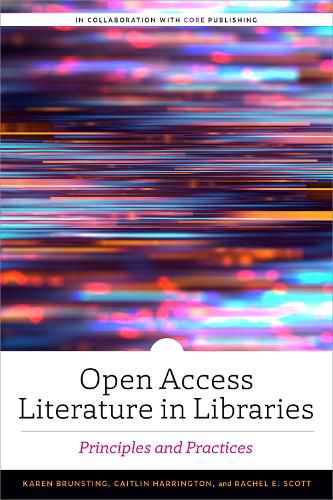Readings Newsletter
Become a Readings Member to make your shopping experience even easier.
Sign in or sign up for free!
You’re not far away from qualifying for FREE standard shipping within Australia
You’ve qualified for FREE standard shipping within Australia
The cart is loading…






This title is printed to order. This book may have been self-published. If so, we cannot guarantee the quality of the content. In the main most books will have gone through the editing process however some may not. We therefore suggest that you be aware of this before ordering this book. If in doubt check either the author or publisher’s details as we are unable to accept any returns unless they are faulty. Please contact us if you have any questions.
Open Access has evolved into the most complex challenge of the scholarly publishing landscape and something libraries grapple with on a regular basis. But although librarians hold increasingly positive perceptions about OA, including its richness of unique content and immediacy of access, many lack the understanding, training, documentation, and knowledge of best practices that would allow them to engage with it confidently. This book helps to fill that gap, using a holistic approach that walks readers through the steps of integrating OA resources into library collections and supporting OA initiatives irrespective of budget, institution type, collection size, and staffing. Explaining definitions and models of OA, types of OA support, the tensions between free-to-read and libre OA, and other key topics, from this book readers will learn
the origins and growth of OA, how to define it, and some of the ways in which librarians have made connections to OA; where OA diverges from the historic role of library collection development policies and ways to bring OA into alignment with an institution's collection development principles and practices; real-world examples of how libraries have supported or integrated OA into their collections, including strategies for selecting and activating OA titles and collections for inclusion, offering open educational resources (OER) to students, samples of collection management workflows, and ideas for aligning collections with institutional repositories or other Green OA initiatives; guidance on financially supporting OA content, initiatives, and platforms; how OA publishing does and does not harmonize with diversity, equity, and inclusion initiatives; and tips for using ongoing assessment and evaluation to continuously support the library's path to an open future.
$9.00 standard shipping within Australia
FREE standard shipping within Australia for orders over $100.00
Express & International shipping calculated at checkout
This title is printed to order. This book may have been self-published. If so, we cannot guarantee the quality of the content. In the main most books will have gone through the editing process however some may not. We therefore suggest that you be aware of this before ordering this book. If in doubt check either the author or publisher’s details as we are unable to accept any returns unless they are faulty. Please contact us if you have any questions.
Open Access has evolved into the most complex challenge of the scholarly publishing landscape and something libraries grapple with on a regular basis. But although librarians hold increasingly positive perceptions about OA, including its richness of unique content and immediacy of access, many lack the understanding, training, documentation, and knowledge of best practices that would allow them to engage with it confidently. This book helps to fill that gap, using a holistic approach that walks readers through the steps of integrating OA resources into library collections and supporting OA initiatives irrespective of budget, institution type, collection size, and staffing. Explaining definitions and models of OA, types of OA support, the tensions between free-to-read and libre OA, and other key topics, from this book readers will learn
the origins and growth of OA, how to define it, and some of the ways in which librarians have made connections to OA; where OA diverges from the historic role of library collection development policies and ways to bring OA into alignment with an institution's collection development principles and practices; real-world examples of how libraries have supported or integrated OA into their collections, including strategies for selecting and activating OA titles and collections for inclusion, offering open educational resources (OER) to students, samples of collection management workflows, and ideas for aligning collections with institutional repositories or other Green OA initiatives; guidance on financially supporting OA content, initiatives, and platforms; how OA publishing does and does not harmonize with diversity, equity, and inclusion initiatives; and tips for using ongoing assessment and evaluation to continuously support the library's path to an open future.